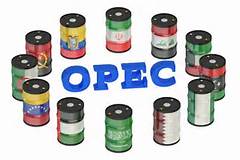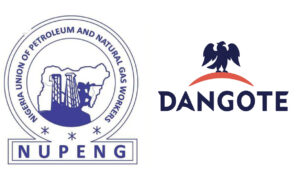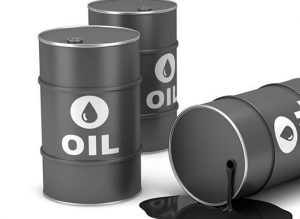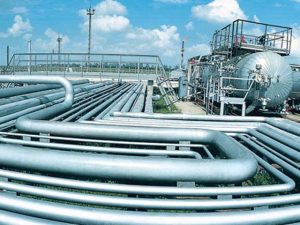OPEC Extends Nigeria’s 1.5 Million Daily Crude Production Quota

OPEC also extended Nigeria’s 1.5 million barrels daily crude production quota to 2025. The cartel announced the extension during its 37th OPEC and non-OPEC ministerial meeting.
The agreement reached in Riyadh on Sunday exceeds market expectations in some ways, extending so-called “voluntary” cuts from key members including Saudi Arabia and Russia well into next year.
However, it also began rolling back those supply reductions in October, earlier than some OPEC-watchers had assumed.
The deal suggests group leader Saudi Arabia, which hosted ministers in its capital after initial plans for a gathering at the OPEC headquarters in Vienna were canceled, is attempting to strike a balance between competing interests.
The agreement aims to keep supporting crude prices while also easing the production restraints against which some members, such as the United Arab Emirates, have chafed.
“We will maintain our precautious and preemptive approach,” Saudi Energy Minister Prince Abdulaziz bin Salman told reporters after the meeting. That includes the possibility of pausing or even reversing the phase-out of the cuts, he said.
Crude prices have recently been in decline amid a fragile economic outlook in top consumer China and doubts about the pace of interest-rate reductions in major industrialized economies. Brent futures settled at $81.62 a barrel on May 31, a drop of 7.1 per cent for the month.
Prior to the meeting, traders and analysts had widely expected OPEC+ to prolong its voluntary supply reductions in order to offset soaring output from its rivals, with some predicting they would be maintained until the end of 2024. Under the new agreement, the eight nations participating in these additional curbs will have added about 750,000 bpd to the market by January.
The accord prolongs roughly 2MMbpd of cuts, which have played a key role in supporting crude prices above $80 a barrel this year but were set to expire at the end of June.
The curbs will continue in full in the third quarter then be gradually phased out over the following 12 months, according to a statement from the Saudi Energy Ministry.
Those “voluntary” cuts by OPEC and its allies were in addition to an earlier group-wide agreement capping crude output at about 39 MMbpd, which ran until the end of this year. The alliance said in a statement that it also agreed to prolong that accord to the end of 2025.
Reaction to the deal was mixed, with some analysts citing the bullish impact of the extension.
“It removes a significant chunk of oil from our balances both this year and next,” said Amrita Sen, director of research and co-founder of Energy Aspects Ltd. The deal keeps OPEC+ in charge of the market, she said.
Others voiced concern about the market’s ability to absorb extra barrels in October.
“We see the meeting as bearish,” analysts at Goldman Sachs Group Inc. said in a note. The detailed plan to unwind the extra cuts “makes it harder to maintain low production if the market turns out softer than bullish OPEC expectations.”
If oil prices were to fall further this year it could improve the economic outlook by offering some relief to central banks grappling with persistent inflation. Yet it would also threaten revenue for producers like Saudi Arabia, which needs prices close to $100 a barrel to fund the ambitious spending plans of Crown Prince Mohammed bin Salman, the International Monetary Fund estimates.
In parallel to the OPEC+ meeting on Sunday, the Saudi government completed a $12 billion sale of shares in state oil giant Aramco, raising funds to help pay for a massive economic transformation plan.
Sunday’s agreement also resolves, albeit temporarily, a potentially fraught debate on some nations’ oil capacity. The alliance had commissioned an external review of its members’ capabilities with the intention of resetting baseline production levels used to measure cuts in 2025.
Several major exporters were seeking to have their levels upgraded, possibly posing a risk to the group’s efforts to stabilize world markets. The deadline for completion of that process has now been pushed back by a year to November 2026.
However, the UAE was given a 300,000 bpd boost to its production target for next year, making it the clear winner from Sunday’s negotiations.
The Gulf country has invested heavily in new oil projects in recent years and clashed sporadically with Riyadh over its production level, including a showdown in 2021 that threatened to rupture the group.
“It’s not about favoring the UAE,” Saudi Arabia’s Prince Abdulaziz told reporters after the meeting. The adjustment brings the proportional cut for the country in line with other members, he said.
The UAE’s energy minister said he was pleased with the outcome. “We wanted to come together and make a decision that keeps the market balanced and gives a good heads up of what’s to be expected,” Suhail Al Mazrouei told reporters after the meeting.
To ensure that market conditions remain tight as the cuts are gradually wound down, the coalition may also need to ensure that members are fully implementing their pledged cutbacks.
While some nations including Saudi Arabia, Kuwait and Algeria promptly fulfilled their agreed share, others like Iraq, Kazakhstan and Russia dragged their heels, and continue to collectively pump several hundred thousand barrels a day above their designated quotas.
All three have pledged to improve their performance, and make additional “compensation” cuts to offset the initial overproduction. But they have a patchy track record when it comes to compliance.
Iraq has chafed against OPEC+ limits for years as it needs revenue to rebuild an economy shattered by war and sanctions, while Russia seeks cash to finance President Vladimir Putin’s war against Ukraine. Kazakhstan meanwhile is eager to deploy new investments in production capacity.









